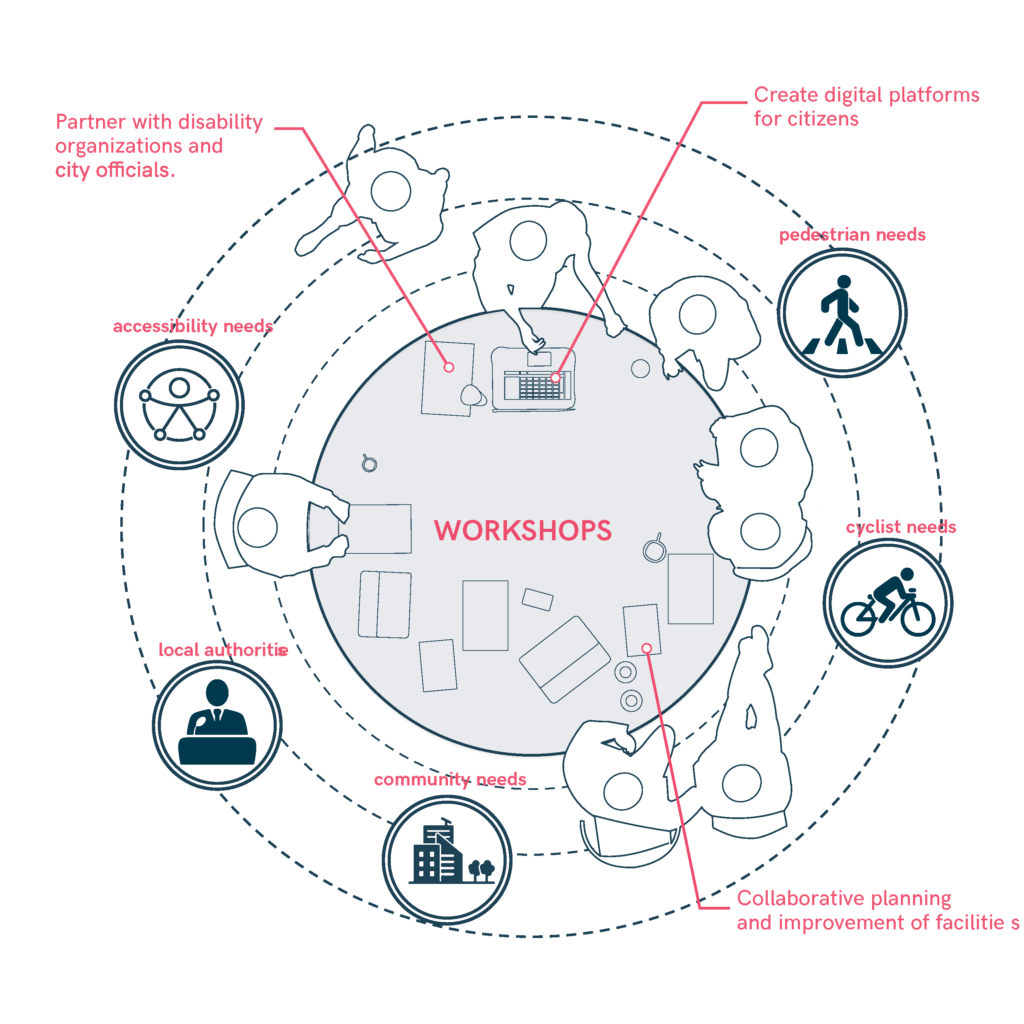Community Engagement and Collaboration
Involving the community in planning and improving urban infrastructure ensures that designs align with the real needs of all users. Engagement fosters collaboration, shared responsibility, and a sense of ownership in creating functional, accessible environments.

- Organize workshops and surveys with cyclists, pedestrians, and people with disabilities to understand their needs.
- Create digital platforms for citizens to propose ideas and report infrastructure issues.
- Establish a community committee to collaborate with local authorities in planning and improving facilities.
- Partner with disability organizations and city officials to implement and maintain accessible infrastructure effectively.
Sources
- https://accessible-eu-centre.ec.europa.eu/content-corner/digital-library/en-172102021-accessibility-and-usability-built-environment-functional-requirements_en
- https://www.iso.org/standard/71860.html
- https://www.t-l.ch/collectivites/guide-des-amenagements-pour-les-transports-publics-routiers-tl/
- https://www.leitfadenbarrierefreiesbauen.de/fileadmin/downloads/archiv/barrierefreies_bauen_leitfaden_en_bf_version2.pdf
- https://www.vitoria-gasteiz.org/http/wb021/contenidosEstaticos/especial/cea/20190917/Avance_PMSEP_2020_2030.pdf
- https://www.punt6.org/es/books/espacios-para-la-vida-cotidiana/
- Carers
- Children
- Cognitive
- Cognitive abilities
- Decolonial perspective
- Digital
- Digital barrier
- Enviroment
- Environmental
- Gender and generations
- Gender perspective
- Hearing impairment
- Low-education
- Low-income
- Older people
- Other
- Physical abilities and features
- Sensory and Physical
- Socioeconomic
- Visual impairment